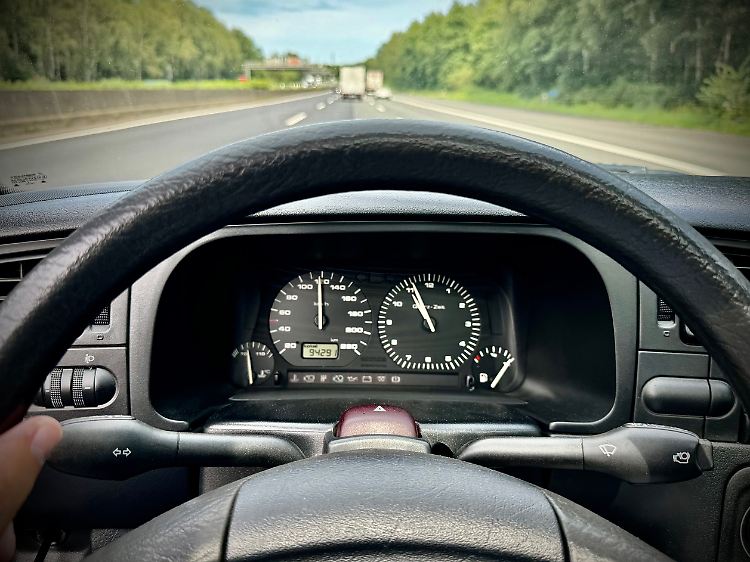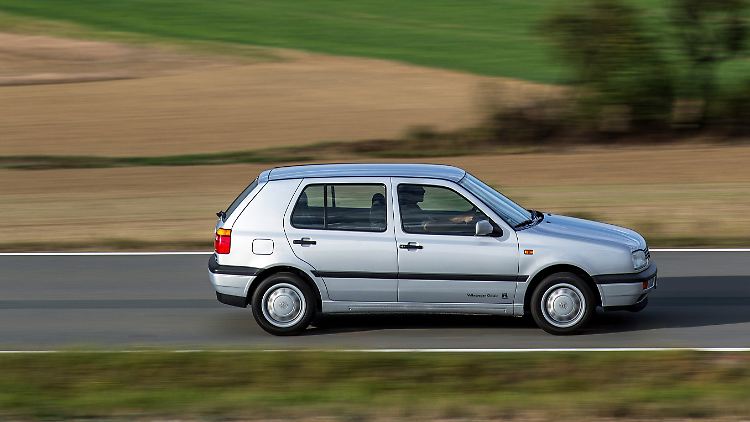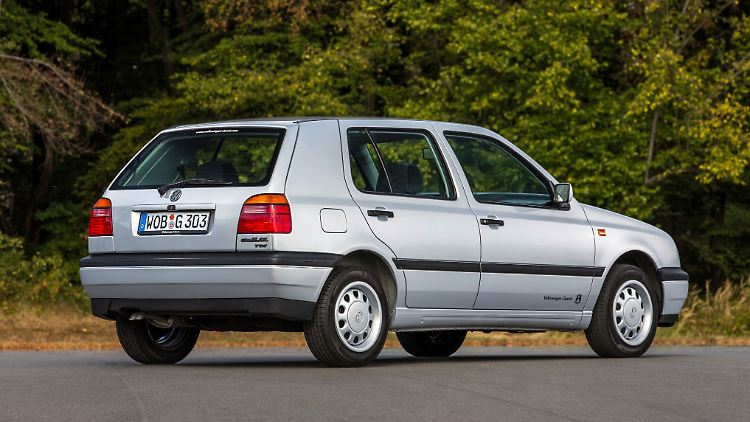The Volkswagen Golf turned 50 this year and the Golf III Ecomatic just over 30 – a double anniversary, so to speak. But what is a Golf Ecomatic anyway? ntv.de got to the bottom of the matter.
Ecomatic is written on the boot lid of this actually rather boring third generation Golf. Yes, the Golf III generally doesn't have it easy, is rather unloved and often rots away due to a lack of good rust prevention. It is also currently in an intermediate phase: as a “used car” (i.e. a worn-out vehicle with remaining MOT) it is almost too unpopular, and as a classic it is still far from being taken seriously. In any case, the inventory is melting away.


Visually, the Golf III is also getting old. The rust-prone Wolfsburg residents are slowly creeping out of the street scene.
(Photo: Volkswagen)
But the example tried here is of a completely different caliber. A classic for technology nerds, you could say, who also like rare automotive outsiders. At the time, the Ecomatic often didn't sell for just under 30,000 German marks. No wonder, when new cars were available, this eco-Golf was as sexy as Birkenstock slippers back then (although that has since changed).
Apparently only a few people were enthusiastic about the tired 64 hp from the 1.9 liter four-cylinder naturally aspirated diesel (acceleration to 100 km/h in the direction of 18 seconds). We are talking about around 2000 copies. Finally, the technology bundle was also economically questionable. How long should it take in the age of cheap fuel to recoup the 2,300 D-Mark surcharge?
Some technological advances may take longer to be adopted – today the start-stop system is quite common. And ultimately, the technical ingredients of the Ecomatic are basically nothing else. There was also an automated manual transmission so that the clutch could be disengaged automatically while driving. Automatic swing utilization was the magic word.
Start-stop and sailing functions were complex 30 years ago
It wasn't as easy to implement as it is today, because in the early 1990s the processor performance of microcomputers was much weaker and the actuators may not have been as sophisticated. And the Golf Ecomatic needs a lot of it for start-stop and its transmission.


Tachometer? But not with diesel. The Ecomatic functions can be switched off using the button on the right side of the right steering column lever.
(Photo: Patrick Broich)
But enough theory, I'm getting into a Golf III again, it's been a long time. The simple interior shows how much development has taken place in the last three decades. Operation, infotainment and so on. But that is another topic. What's much more interesting now is that the Ecomatic doesn't have a clutch pedal, but still has a conventional gear lever with the shift pattern of a five-speed gearbox engraved on it. Well, it doesn't seem to be rocket science. When I start the naturally aspirated diesel, I notice how sophisticated diesel engines run today, which I actually don't consider to be sophisticated. Rattling and vibrations used to be common with diesel engines, but have now been forgotten. And especially in the compact class.


At 4.02 meters, the Golf III was the standard size for a compact class at the time. Today even small cars are longer.
(Photo: Volkswagen)
But now – put it in first gear and accelerate. It has to be said that the pneumatic clutch engagement works quite harmoniously. And that's where the Golf rolls. I simply shift through the gears and take little notice of the extreme lack of power. Firstly, the 4.02 meter long Wolfsburg weighs just 1.2 tonnes, secondly, it is loud, which suggests more dynamism and thirdly, I am prepared for leisurely movement.
But I only think it's really cool when the system switches off the engine when coasting. Crazy. Simply while driving. Because you have to remember: Simple start-stop systems already existed in the seventies and eighties. But the sailing function has only become increasingly popular in recent years (almost 40 years later!) with the electrification of drive trains. And the technical effort should not be underestimated; after all, electric pumps are needed to replace various functions during engine breaks that the combustion engine usually takes over. This includes an electric hydraulic and vacuum pump to ensure supply to the brake booster and power steering.
Rushing confuses the system
The test sample provided by Volkswagen is virtually like new and has less than 100,000 kilometers on the clock. And the Ecomatic works well in everyday life, although you can tell that the technology back then was still a bit rough.


Instead of Ecomatic, the TDI with direct injection has prevailed. Start-stop systems came much later, sailing even later.
(Photo: Volkswagen)
The diesel engine usually starts up again quickly when you press the accelerator pedal after taking a break. But you also have to drive carefully, because hectic maneuvers can overwhelm the system. Then the engine no longer starts and a restart with the key is necessary. And of course the last bit of intelligence was missing at the end of 1993, so you can simply switch off coasting using a button in the right steering column lever, for example when driving downhill where engine braking power is required.
Nevertheless, Volkswagen was ahead of its time with the Ecomatic. On the other hand, the time was obviously not yet ripe for such complex technology back then. It would be interesting to know how great the savings potential really is – but to do this you would have to make extensive comparisons with a conventional Golf III diesel version. The old Golf D isn't voracious anyway; somewhere between 4.5 and 5 liters per 100 kilometers wasn't unrealistic back then. No old gas pump and stuff like that.
Cars are much heavier these days. And no one wants to miss the level of safety that has now been achieved, nor do they want to miss the many comfort functions of modern cars. In any case, the Golf III Ecomatic would be a cool classic – for nerds who don't give a damn about a GTI. After all, everyone has it. But first find one. In any case, none have been listed on the relevant internet exchanges recently. But what is not can still become.































